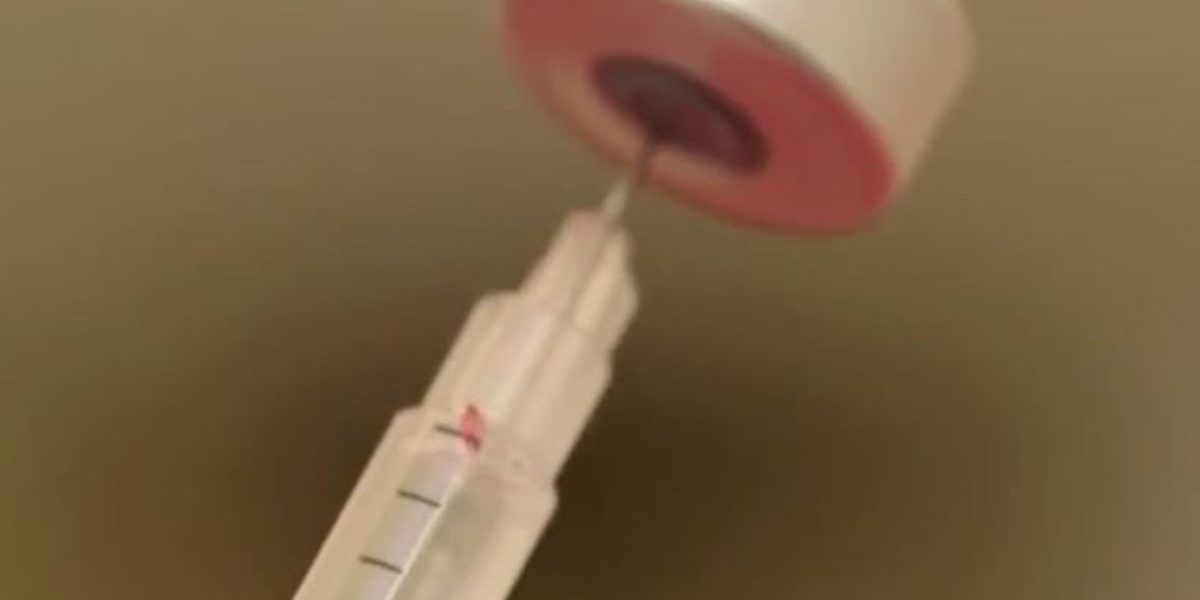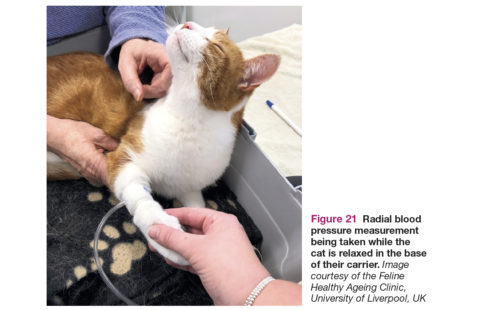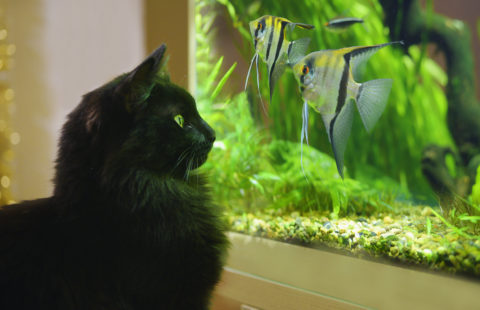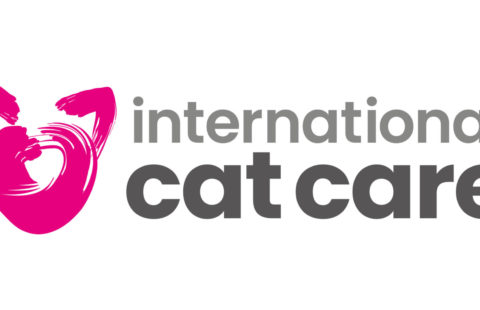Dr Samantha Taylor BVetMed(Hons) CertSAM DipECVIM-CA MANZCVS FRCVS
First published in Feline Focus March 2022
Continuous glucose monitors are used with increasing frequency in small animal practice to monitor canine and feline diabetic patients, seeming to both offer a solution to the problem of interpreting single blood glucose curves and avoiding serial venepuncture.
The devices are generally well tolerated and easy to place, and recent research has shown that they can play an important role in feline diabetic management. This article will discuss this evidence, describe the procedure of placement and complications, as well as explain when such a device can be most useful for the diabetic feline patient.
Feline diabetics can be challenging to manage. We know that monitoring response to insulin and detecting hyper- and hypoglycaemia are vital to successful control of clinical signs. However, blood glucose curves can be influenced by stress in the veterinary clinic.1 To overcome this complication, blood glucose can be measured at home by willing owners,2 yet even if this is successful, there can be day-to-day variation in the curves that would alter treatment decisions.3 Continuous glucose monitors (CGMs) offer a solution to the problem of interpreting single blood glucose curves and avoiding serial venepuncture.
Key point: Continuous glucose monitors can provide a more detailed picture of blood glucose levels, making treatment decisions easier.
About the system
The most commonly used CGM system currently is the ‘FreeStyle Libre’ (Abbott), which consists of a small sensor disc placed on the animal (Figure 1a), which measures interstitial glucose, and either a mobile phone application or a reader device (Figure 1b) that stores the data from the sensor disc. The device, unlike previous systems, does not require calibration with blood glucose and can take readings for 14 days, although it may not function for this long in cats. The sensor disc can store up to 8 h of data, which is then easily transferred to the phone or reader device. Accuracy of the FreeStyle Libre has been assessed in humans comparing favourably with capillary blood glucose, and three recent studies in cats have shown good agreement between interstitial and blood glucose readings.4–6 However, the time lag for equilibration between blood and interstitium must be considered when there are discrepancies between the results.

Figure 1a: A FreeStyle Libre sensor device on the lateral thorax of a cat.
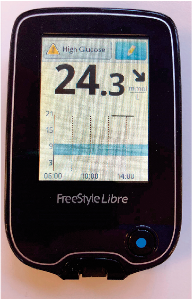
Figure 1b: The reader device; an application for the phone can be used instead or in addition.
Del Baldo et al showed that during rapid changes in blood glucose, there can be marked differences between the two compartments, and this should be considered when interpreting results.5 Deiting and Mischke also comment on certain readings that differed greatly between interstitial and blood glucose, and particularly in certain patients.6 All non-plausible results should be checked by measuring blood glucose, and trends analysed, taking into account the limitations of the device. The system is designed for human diabetics, so has preset parameters for that species. The ‘Libre 2’ system allows for an alarm to be set when interstitial glucose falls above or below certain parameters.
Interested in learning more about this topic? From managing complicated diabetics to treating DKA, learn from real cases with our Interactive Feline Endocrinology course.
Application of the device
The vast majority of sensors can be placed in conscious patients, but pushing the sensor on requires a little pressure and for some feline patients, and when starting to place sensors, sedation/anxiolysis with gabapentin or butorphanol may be helpful. If diabetic patients are sedated for other procedures (eg, imaging), the opportunity should be taken to place a sensor. The sensor comes with an applicator device (Figure 2) that is used to place the sensor.
The device can be placed in any location, and studies have used different sites. The dorsal neck can be used cats,4 or the dorsal thorax caudal to the scapula.6,7 It is important to clip the area well, clean to remove dirt (wipes are supplied with the sensor) and allow to dry completely before application. Although the sensor disc has adhesive, the author adds ‘dots’ of tissue (cyanoacrylate) glue around the edge of the adhesive area or the edges can ‘lift’ with time (Figure 3); the same strategy was adopted in the study by Shea and Hess.4 In one study of 34 diabetic cats, the authors did not use additional adhesive, but secured the edges with sutures, which they report was well tolerated.6 In the author’s experience this is not required.

Figure 2: The sensor disc in the blue applicator. The thin catheter in the centre is flexible and sits under the skin (arrow).

Figure 3: Adding additional tissue glue to the sensor disc in small ‘dots’ around the edge of the adhesive disc.
Patient interference is also uncommon in the author’s experience and in general the sensor does not need to be covered. In cats, dressings and T-shirts cause stress and may limit normal behaviour and affect readings. A soft Buster collar, if anything, is used in cats in the author’s clinic, although some clinicians cover a sensor placed on the neck, for example, with a dressing.4
FreeStyle Libre sensor application tips
- Consider mild sedation if the patient is anxious or you are unfamiliar with sensor placement. Pre-application gabapentin or butorphanol may be adequate.
- Ensure skin is completely clipped, clean and dry before placement of the sensor.
- Apply a few drops of ‘tissue’ glue around the edge of the sensor adhesive surface, but avoid excessive amounts that could irritate the skin.
- Once the sensor is placed, do not immediately remove the applicator as you may inadvertently remove the sensor too. Keep in position for a few seconds and check the edges of the sensor’s adhesive face are stuck to the patient before removing the applicator.
- Try to select an area that has less motion (eg, lateral thorax behind the scapula, lumbar area).
- Avoid ‘pet shirts’ and adhesive dressings, if possible, as they can cause stress/anxiety and limit normal mobility in cats.
- If using a collar to avoid patient interference, choose a more ‘cat friendly’ soft collar.
Interpretation of data
If at home or in the veterinary clinic, the sensor should be scanned every 8 hours to upload the data to a phone or reader device. Results can be sent from clients to the clinic using the application, or the reader connected to a computer to upload the data once the required software is installed. Figure 4 shows an example of a report that has various features including daily graphs, average daily glucose and the proportion of time interstitial glucose is within certain parameters (again preset for humans).
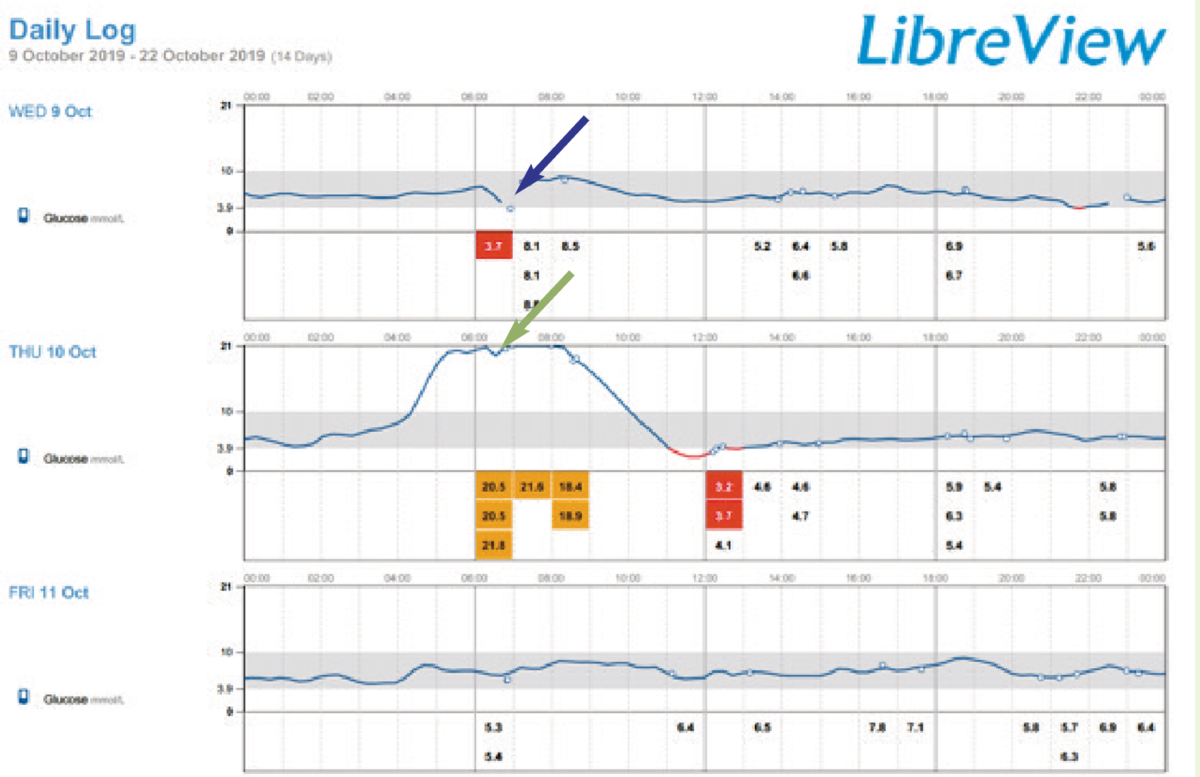
Figure 4: Example of a report provided by the FreeStyle Libre system for a diabetic cat. This cat is approaching/in remission and hypoglycaemia is noted on day 1 (blue arrow), but also note the period of hyperglycaemia on day 2 (green arrow) that coincided with a trip to the clinic, illustrating the effect of stress on blood glucose, and how decisions made based on those readings could result in increasing the insulin dose
Indications for use of a CGM
The system can be used in clinic on newly diagnosed diabetics looking at the response to insulin and duration of effect (patients can then be discharged with the sensor), cats with diabetic ketoacidosis, unstable diabetics (eg, persistent clinical signs, persistent hyperglycaemia or hypoglycaemic episodes, suspicion of Somogyi overswing) or those feline patients approaching remission. It could also be used in septic or critical patients where hypoglycaemia is a concern, or patients on insulin or glucose continuous rate infusions, but these indications have not been studied in cats at this time, and the time lag between blood and interstitial glucose must be taken into account.5 Validation of results with measurement of blood glucose is recommended in such patients before adjusting treatment protocols.
The author has found it most useful:
- in cats approaching remission;
- in patients with diabetic ketoacidosis; and
- in animals where stress in the clinic is highly likely to influence glucose curve interpretation and decisions on insulin dose.
Figure 4 shows data from a FreeStyle Libre device on a cat entering diabetic remission.
Complications and limitations
A recent study,6 examined the complications of the FreeStyle Libre device in 20 cats (33 sensors placed). Most sensors were placed over the dorsolateral thorax in this study. The most common complications were early sensor detachment (15%) and other complications related to the skin site where the sensor attached, mainly minor skin irritation, although two cats had erosion or abscess. The authors of this study felt that additional cyanoacrylate glue applied to the skin-facing surface of the sensor could have contributed to the skin trauma, particularly if the sensor is then prematurely removed. It seems sensible to be cautious with the amount of glue used. Shea and Hess used cyanoacrylate glue in small amounts and found minimal skin irritation.4
Hair may be slow to regrow in the area of sensor placement and in pointed cats the fur may grow back a different colour (Figure 7). Deiting and Mischke noted that a shortened duration of sensor function was common in their patients with premature sensor detachment occurring, leading to an average runtime of 8.3 days.6 Additionally, Shea and Hess found in their study of cats discharged with sensors, the median time of sensor activity was 7 days. In 80% of placements sensor failure or displacement was reported before the end of the 13-day study period.4 This high number of sensor failures could be related to the positioning (all on the dorsal neck), suggesting the lower detachment rate in the Shoelson et al study (15%) could relate to the placement on the lateral thorax.7 The sensors are designed for human skin, and in human patients various dressings and bands are available to secure the sensors. Cats are highly mobile, with thin skin, and in debilitated patients the small catheter can easily become dislodged from its position. During the period of sensor placement, hair may regrow and loosen the adhesive. Owners should be warned that premature sensor detachment may occur, and the costs of such a complication and sensor replacement taken into account.
The FreeStyle Libre CGM system has an upper interstitial glucose measurement limit of 27.8 mmol/l and readings above this level are recorded as ‘Hi’. This is potentially a limitation in cats with diabetic ketoacidosis, for example, that can be extremely hyperglycaemic, and in poorly controlled cats where that additional information might be useful.
Conclusions
CGM can be a useful tool in the management of diabetic cats. However, data must be interpreted along with clinical parameters indicative of a response (eg, weight, water intake) and limitations of the monitoring system acknowledged. There may be a discrepancy between interstitial and blood glucose, and particularly during rapid changes in blood glucose when a time lag between the two compartments may occur. The FreeStyle Libre sensor has been studied in feline diabetics, is well tolerated and has good accuracy. However, premature sensor dislodgement is common and the duration of sensor function is likely to be less than the full 14 days that the sensor functions for in humans.
Want to read more articles like this? Sign up for ISFM Membership to receive Feline Focus – our monthly digital nurse & technician journal (it’s free for Veterinary Nurses!)
References
- Sparkes AH, Cannon M, Church D, et al. ISFM consensus guidelines on the practical management of diabetes mellitus in cats. J Feline Med Surg 2015; 17: 235–250.
- Hazuchova K, Gostelow R, Scudder C, et al. Acceptance of home blood glucose monitoring by owners of recently diagnosed diabetic cats and impact on quality of life changes in cat and owner. J Feline Med Surg 2017; 20: 711–720.
- Alt N, Kley S, Haessig M, et al. Day-to-day variability of blood glucose concentration curves generated at home in cats with diabetes mellitus. J Am Vet Med Assoc 2007; 230: 1011–1017.
- Shea EK and Hess RS. Validation of a flash glucose monitoring system in outpatient diabetic cats. J Vet Intern Med 2021; 35: 1703–1712.
- Del Baldo, F, Fracassi F, Pires J, et al. Accuracy of a flash glucose monitoring system in cats and determination of the time lag between blood glucose and interstitial glucose concentrations. J Vet Intern Med 2021; 35: 1279–1287.
- Deiting V and Mischke R. Use of the ‘FreeStyle Libre’ glucose monitoring system in diabetic cats. Res Vet Sci 2021; 135: 253–259.
- Shoelson AM, Mahony OM and Pavlick M. Complications associated with a flash glucose monitoring system in diabetic cats. J Feline Med Surg 2021; 23: 557–562.



